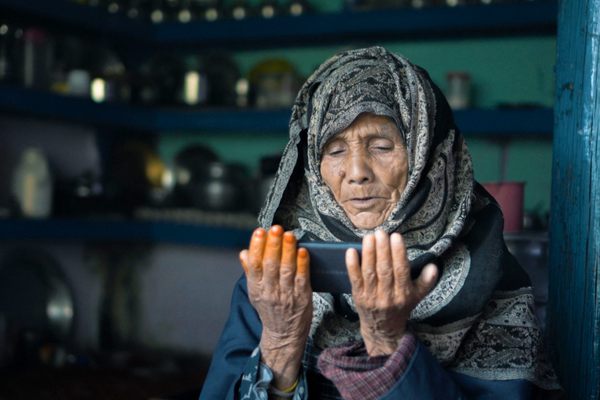How a Siege in Algeria Sold France on Iced Coffee
Supposedly, heroic French soldiers enjoyed taking their coffee with water.

Iced coffee. (Photo: zeus/CC0)
There’s no definitive answer to who we can thank for the miracle of cold-brewed coffee. New Orleans was onto cold brew decades before the rest of America caught on. The Dutch are sometimes given credit for the invention of the excruciating style sometimes called “ice drip,” in which melting ice filters drop by drop through coffee grounds. But it’s also possible it was Japanese coffee drinkers, who were already cold-brewing tea, who came up with cold-brew.
Wherever the idea came from originally, though, one style of cold coffee, the French mazagran, is supposed to have come from a very particular place—a besieged fortress on Algeria’s north coast.
In 1840, tensions in Algeria were running high again. The French invasion of the country had begun a decade before, when they took control from the Ottoman Empire. But in the last years of the 1830s, French troops were facing a resistance movement led by a Sufi scholar, the Emir Abdelkader or Abd al-Qadir. Abdelkader had negotiated a treaty with France in 1837 but, after consolidating power in the country’s interior, starting fighting for control of the coast as well. In 1840, his fighters trapped 123 French soldiers in a fortress, at the outpost of Mazagran.
There’s no good agreement on how many Algerian soldiers surrounded the force—one account puts their number in the hundreds, more likely, it was in the thousands. The French soldiers were definitely outnumbered, though, and their walls were not particularly high. They withstood their enemies for a few days and were ready to make a last stand when reinforcements arrived and the siege force retreated.

The Battle of Mazagran. (Image: Jean-Adolphe Beaucé)
Militarily, this was a small victory, at most. But it was perfect public relations fodder for France, where plenty of people were skeptical of Algeria’s colonization. Much was made of the Mazagran heroics; the soldiers who found there were celebrated with fireworks, and the officers promoted. Printers put out lithographs celebrating Mazagran; liqueur makers created special decorative labels. As Jennifer Sessions writes in her account of France’s Algerian wars, By Sword and Plow, people even started dressing in a “Mazagran” style: “Mazagran pantaloons, hats, gloves, shawls, etc. became instantly and universally the vogue,” a magazine reported at the time.
The most lasting monument to Mazagran, though, was cold coffee. As the story goes, the soldiers in the fortress could not, as they usually would, cut their coffee with brandy. Instead, they cut it with water—whether to make it last longer or to make their water more palatable isn’t clear. Soon, it became popular in French cafés to order “un mazagran,” coffee served in a tall glass, sometimes with ice, and accompanied by a beaker of cold water to cut it with.
If you look for the definition of a mazagran, though, the only consistent part is the story that un mazagran was coffee inspired by the French troops at Mazagran. You might find that the proper way to make on is to pour hot coffee over ice (actually a pretty decent method for brewing cold coffee). Sometimes, the water is a key ingredient; sometimes it’s made with seltzer. Sometimes, the only distinguishing feature of a mazagran is that it’s sold in a glass, rather than a cup. In some places, the once-missing brandy has become a key ingredient.
Ordering “un mazagran” was still common in France into the 20th century, although it seems now to have mostly disappeared. The one stronghold of Mazagran coffee left is in neither France nor Algeria, but in Portugal, where it’s become a soft of coffee-lemonade hybrid: it’s iced coffee with at least a twist of lemon. It doesn’t seem very likely that this is what French soldiers were drinking during a siege, but it’s reportedly tasty—especially when it’s made with a shot of rum.
Gastro Obscura covers the world’s most wondrous food and drink.
Sign up for our email, delivered twice a week.





























Follow us on Twitter to get the latest on the world's hidden wonders.
Like us on Facebook to get the latest on the world's hidden wonders.
Follow us on Twitter Like us on Facebook